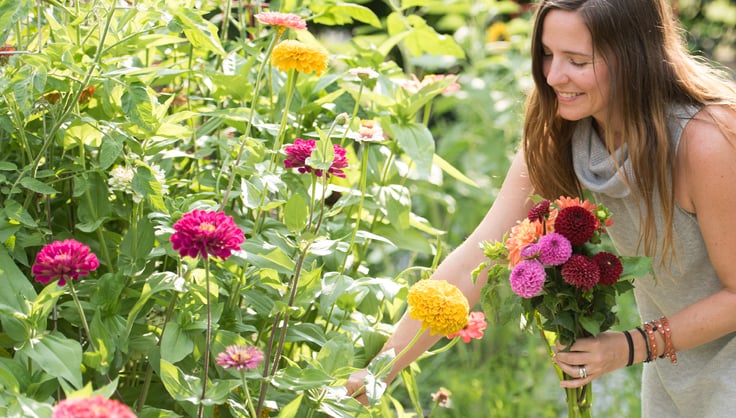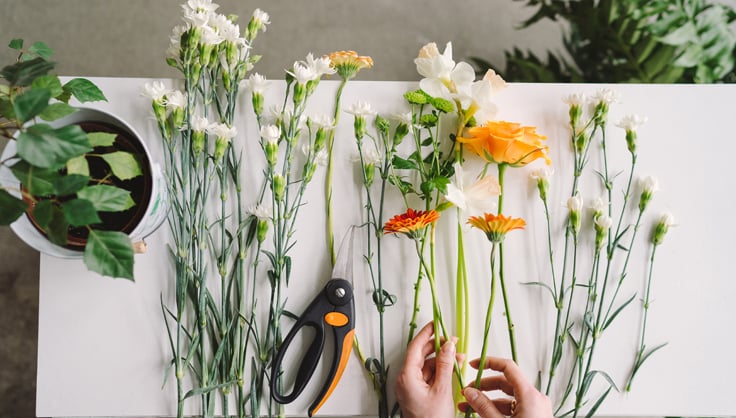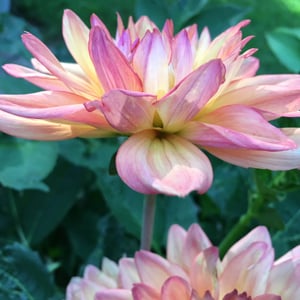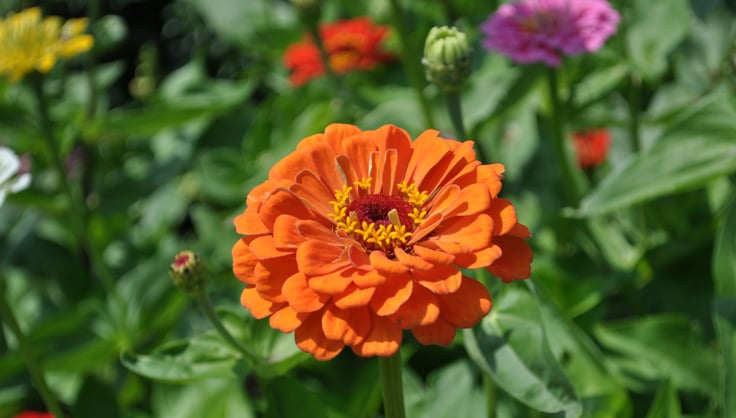Preparing Cut Flowers for a Bouquet

This is the year you decided to expand your garden repertoire beyond your usual cukes and tomatoes and plant a cutting garden specifically with flowers in mind. You’ve seeded and staked, weeded and watered, and at last some colorful blooms have graced your garden. A few simple tips will help bring the beauty of your garden into your home or into the hands of a loved one.
When to cut flowers
Different plants must be cut at different stages in order to achieve their maximum vase life. Zinnias need to have fully open discs supported by stiff, sturdy stems. Give them the “wiggle test” before cutting; if the stem flops around even the slightest, leave it for another day or two (it will be hard to resist the urge to harvest everything in sight, but patience will be rewarded with a bloom lasting 10+ days in the vase). Annual sunflowers can be cut as soon as 3-4 petals have lifted off the face of the bloom. Snapdragons and delphinium can be harvested as soon as the blooms on the lower third of the stem have opened.
Length, length, length!
Unless you intend to use a small container or jar for your bouquet, you will benefit from having long stems to work with as you arrange your bouquet. Be sure to make your cut at a 45-degree angle, to avoid sitting the open stem directly on the bottom of the vase.
Cut, and come again?
Celosia, gomphrena, zinnias, and dahlias are fantastic annual producers that will continue to put out more blooms the more you harvest. “Cut one and done” annual crops, such as single-stem sunflowers and stock, are just that – after one harvest, the plant is done and will not produce additional flowers. If you desire a consistent harvest throughout the season, you may need to employ succession planting and resow seeds every 10-14 days. Spring bulbs such as tulips and daffodils will also only produce one bloom per stem per season.

Strip (...just your flower stems!)
Remove all lower leaves and side branches so only clean, rinsed stems sit below the water line. Submerged leaves will rot and contribute bacteria to your vase water, shortening the lifespan of your bouquet.
Hydrate
Place your cut stems immediately in clean water that is cool- to room-temperature. Above all, cut flowers will last longest in the vase if they are adequately hydrated.
Storage
If you plan to store your bouquet for a few days for an upcoming event, be sure to snip the stem ends and change the water every 1-2 days for maximum freshness. Keep your container out of direct sunlight in a cool room, away from ethylene-producing produce, like apples. This odorless gas can cause petals to fade and drop prematurely.
Last updated: 06/28/2023
Print this Article:
Related Articles
Get the Dirt
Stay up to date on new articles and advice. Please fill out the information below.





